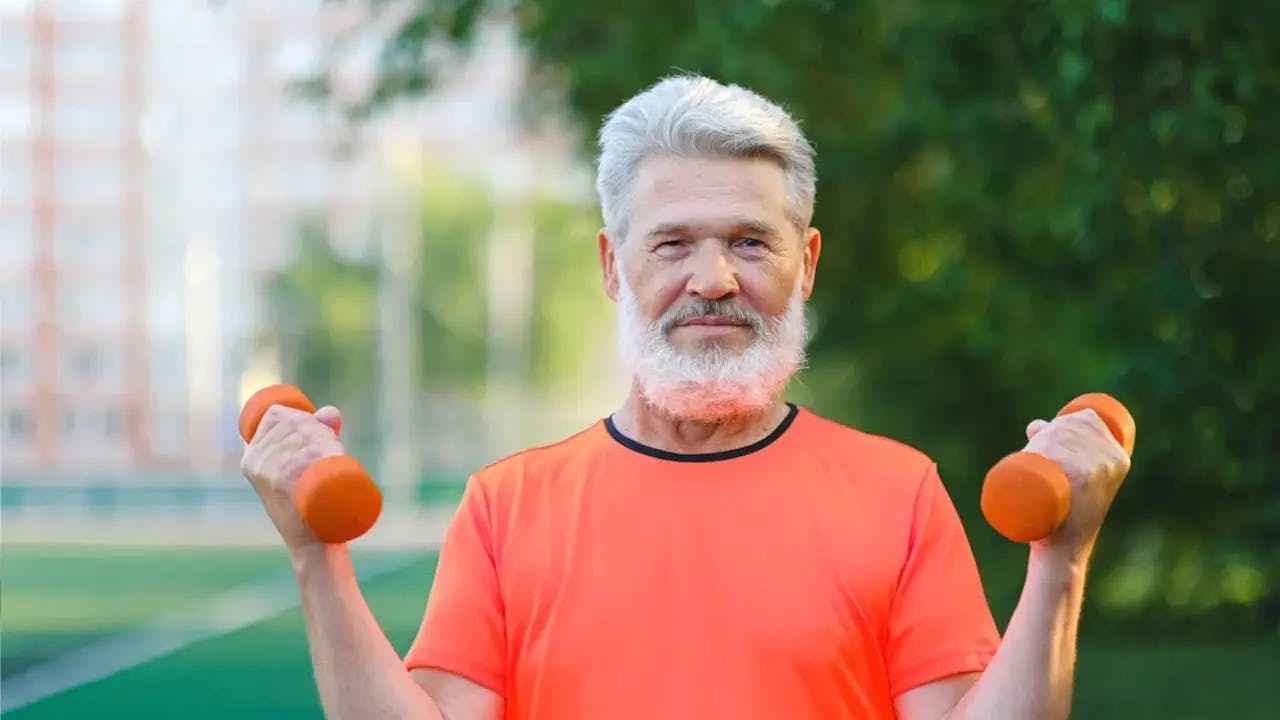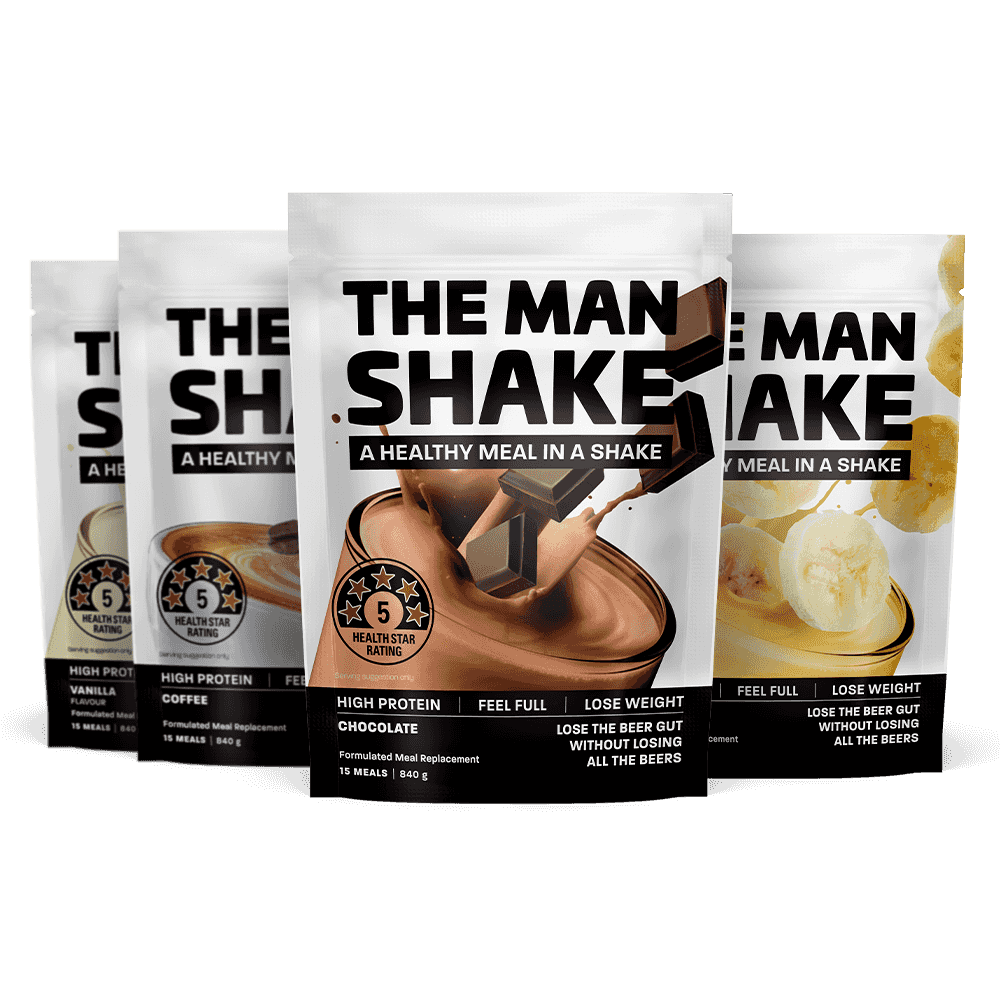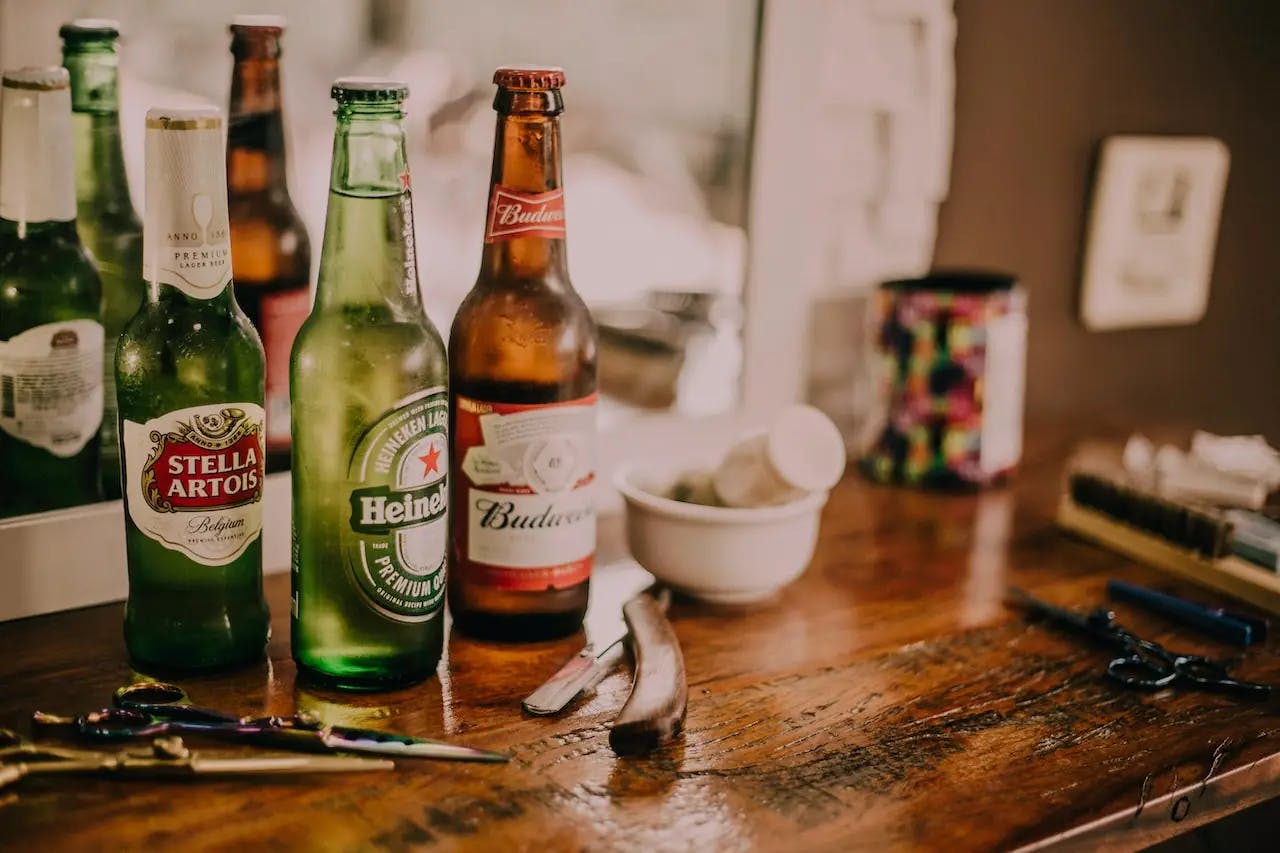How To Lose Weight In Your 50s
•Weight loss

Share
Let’s face it, weight loss can be a (worthwhile) challenge no matter what age you are. However, things tend to get a little tougher once you hit the half-century as your muscles begin to ache a little more and your joints start to creek like the floorboards in your great aunt’s attic.
Likewise, with the retirement age increasing, older people are getting more time poor, making it more difficult to dedicate time to exercise and healthy eating. However, it doesn’t need to be this way.
We’ve put together this little guide that we hope will simplify weight loss for those who have hit 50 and are still batting on.
Eat More Fibre And Wholegrains
Fibre is particularly valuable as you enter older age and not just because it keeps you regular!
It's very filling, meaning you will be less likely to snack on unhealthy between meals on a high-fibre diet. According to nutritionists, you should aim to fill over half your plate with fibre-rich vegetables at each meal, as not only are they low in calories, but they are chock full of the vitamins and minerals you need as you get older. Try blending vegetables into pasta sauces and soups while also keeping frozen vegetables in your freezer so they’re always close at hand.
Beans and lentils are also important sources of fibre and protein and can help maintain a good metabolism by feeding the good bacteria in your gut, which in turn creates short-chain fatty acids. Like fibre-rich veggies, beans and lentils are super easy to integrate into soups and sauces and are easy to hide if you’re a fussy eater.
Wholegrains like quinoa, barley and oats are also very important, as they are linked to increased calorie burn. To increase your wholegrain intake, try replacing white bread and pasta with their wholegrain equivalents.
Resistance Training And Cardio
Exercise is a big part of losing weight. Studies have shown that older people who do both 30 minutes of aerobic exercise and 30 minutes of resistance exercise three days a week generally lose fat and gain muscle.
Resistance training is great for building muscles, which in turn is great for burning calories. If you go to the gym, grab a pair of dumbbells and work out at home. Training your legs and upper body muscles with exercises like squats, deadlifts and bench presses should engage more muscle groups and stimulate your metabolism. For weight loss, you should aim to do resistance training three times a week.
Cardio is also important for weight loss during your 50s. Cardio can be anything from using a treadmill, going for a run, a bike ride, swimming or even walking — if it gets your heart rate up, it’ll work. Experts recommend that people should aim for at least two and a half hours of moderate cardio per week for general health, but if you’re aiming to lose weight, you’ll want to do more.
We've got some easy exercises to get you started, and don't forget incidental exercise also counts.
Take Your Scale Numbers With A Grain Of Salt
While we don’t necessarily recommend ditching the scales altogether, we recommend not making its number the be-all and end-all.
Weight numbers can fluctuate from day-to-day, so instead of focusing solely on the number on your scales, focus on how you feel. Do you feel more energetic? Confident? Do your clothes fit better? If you said yes to any of the above. You’re likely on the right track.
Likewise, look to get your muscle mass, visceral fat and total fat body percentage measured. If the weight on your scales isn’t going down, but your muscle mass level has increased while your total body fat and visceral fat levels have both decreased, you’re getting healthier.
Eat Mindfully
With all the distractions in your life, it’s hard to sit down and appreciate your food. Eating while distracted (e.g. making a phone call, replying to an email, watching television) is often linked to feelings of emptiness post-meal and can encourage people to eat again despite not needing additional food. The solution is to eat mindfully, which involves eating your food slowly, enjoying each bite, and concentrating almost solely on the meal. If you eat mindfully, you’re more likely to feel satisfied at the end of your meal, and thus less likely to overeat.
Keep Track Of What You Eat
Studies have shown that people who record what they eat are more likely to make the most healthy choices when it comes to their meals. We recommend using a food-tracking app like My Fitness Pal, which tells you the number of kilojoules you need to consume per day based on your weight loss goals, and how many kilojoules are in each of your meals. Alternatively, you could just write down your meals and snacks in an exercise book and review it at the end of the day. It may help you make some more informed decisions moving forward.
Sleep Well
While good sleeping habits are important for people of all ages, as you get older, it gets even more vital. To assist with weight loss, experts recommend seven to nine hours of sleep per night, while turning in and waking up at consistent times. For more detailed tips about sleeping well, check out this blog.
Cook More
Cooking your food is beneficial for several reasons, the first being that you can control what goes into your meal, meaning you can avoid unhealthy ingredients and people who try to upsell you larger portions. Likewise, cooking your meals can be quite satisfying. Check out our range of recipes to help you with breakfast, lunch, dinner and even dessert!






